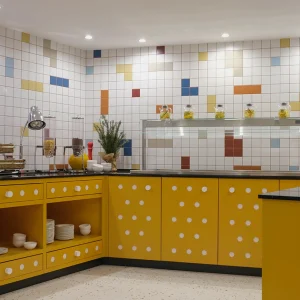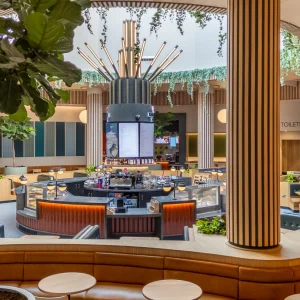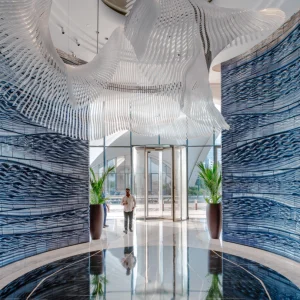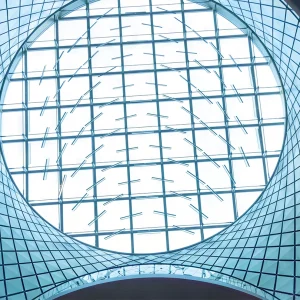
Interview by Herbert Wright
Blueprint: The Heydar Aliyev Center in Baku and the Serpentine Sackler designs are both characterised by fluid roofs that dramatically plunge to kiss the ground. Is that a coincidence?
ZH: The office works more like a school of thought, and there are lots of ideas and influences that nurture each other. Actually, if you look at the Aquatics Centre and Aqua Table, you can see the consistency and research in how to relate to the ground.

Zaha Hadid Photo credit: Giovanna Silva

The Serpentine Sackler Gallery extension beside the re-purposed Magazine building, built in 1805

The auditorium, clad in American hardwood, is the only interior space that is not white

The curl penetrating the welcome area’s facade gives little indication of the museum volume behind. Photo: Hufton+Crow
Blueprint: Was there an initial concept sketch for the Heydar Aliyev Center design?
ZH: It is more than a singular, initial sketch in the conventional sense. There are references within our research and repertoire of projects that explore architecture as landscape. The computer was used by the team at an early stage as it gives much greater understanding and control of complex geometry.

A great first-floor tunnel-bridge is devoid of straight surfaces. Photo: Hufton+Crow
 Photo: Hufton+Crow
Photo: Hufton+Crow

The centre is entered from the south-west side, which includes the Heydar Aliyev Museum. Photo: Hufton+Crow
Blueprint: Does the fluidity of those designs ultimately have any root or inspiration in Arabic script?
ZH: It is the mathematics – the mix of logic and abstraction. I became interested in geometry while studying mathematics [at Beirut University, before moving to London]. I realised there was a connection with the logic of maths to architecture and the abstraction of Arabic calligraphy. Geometry and mathematics have a tremendous connection to architecture. At the beginning of the 20th century, certain abstract movements in art were looking at figurative art, and also certain geometric abstractions, as well as Arabic calligraphy. I’m absolutely sure the Russians – Malevich, in particular – looked at those scripts. The calligraphy you see in architectural plans today is to do with the notion of deconstruction and fragmentation in space.

From the western corner, the centre may evoke a great whale. Photo: Hufton+Crow

The Heydar Aliyev Museum is in a part of the building set forward to the rest, here to the right of the roof’s parabolic dip to the ground. Photo: Hufton+Crow

The multipurpose room where banquets can be hosted is ground floor, centre of the north-west facade. Photo: Hufton+Crow
Blueprint: You used to talk of ‘the drawing as an explosion’, but has this idea matured into a less fragmented vision, as projects integrate into their architectural and urban settings, such as the Serpentine’s Magazine building or a hillside in Baku?
ZH: I have always been interested in the concept of fragmentation and with ideas of abstraction and explosion, where we were deconstructing ideas of repetitiveness and mass production. So the work started out with abstraction. But my ambition was always to create fluid space – on all levels. The layering process increases the complexity to where the buildings become like a landscape. It’s not linear; it changes according to what is appropriate for the project.
You can read Herbert Wright’s full critique of the Heydar Aliyev Center in Baku in the latest issue of Blueprint.





